 W
WThe 1st (Halifax-Dartmouth) Field Artillery Regiment, RCA, is a Canadian Forces reserve artillery regiment. It is located in Halifax, Nova Scotia, at 73 Hobson Lake Drive. The unit consists of two batteries, 51st and 84th Field Batteries. There are two units located within 1st (Halifax-Dartmouth) Field Artillery Regiment. One is in Halifax and the other is the 84th Independent Field Battery located in Yarmouth NS. Both share the same Commanding Officer.
 W
WThe 8th Canadian Hussars is the longest-serving armoured regiment in the Canadian Army. It was formed on the 4 April 1848 in New Brunswick where it has served continually ever since. Today it is a reserve armoured reconnaissance regiment with two squadrons. Its Regimental Headquarters (RHQ) and A Squadron are located in Moncton with B Squadron located in Sussex, New Brunswick.
 W
WThe 40th Regiment of Foot was an infantry regiment of the British Army, raised in 1717 in Annapolis Royal, Nova Scotia. Under the Childers Reforms it amalgamated with the 82nd Regiment of Foot to form the Prince of Wales's Volunteers in 1881.
 W
WThe Bermuda Militia Artillery was a unit of part-time soldiers organised in 1895 as a reserve for the Royal Garrison Artillery detachment of the Regular Army garrison in Bermuda. Militia Artillery units of the United Kingdom and Colonies were intended to man coastal batteries in times of war, which were manned by under-strength numbers of regular army gunners in peace time. The unit was embodied during both world wars, fulfilling its role within the garrison, and also sending contingents overseas to more active theatres of the wars.
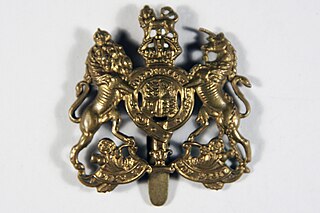 W
WThe Bermuda Militia Infantry was raised in 1939 as a part-time reserve of the British Army's Bermuda Garrison.
 W
WThe Bermuda Volunteer Rifle Corps (BVRC) was created in 1894 as an all-white, racially segregated reserve for the Regular Army infantry component of the Bermuda Garrison. Renamed the Bermuda Rifles in 1951, it was amalgamated into the Bermuda Regiment in 1965.
 W
WThis is a list of auxiliary regiments or units formed by the British in individual colonies of the British Empire. In some colonies, the units were led by officers seconded from the British Army. Especially in the case of units that recruited non-whites, even in colonies where the officers were primarily colonials, commissions were generally restricted to whites until after the Second World War. Non-white colonials, as well as non-whites from Britain itself served primarily in the other ranks. Although militias operating on the same principle as the militia in England and Wales were established in many colonies during the 17th and 18th Centuries, from the 19th Century onwards colonial units were mostly voluntary, and supplied a reserve force either to be called up in war time to reinforce regular British Army garrisons for home defence, or in some cases were entirely responsible for home defence. Many units, however, took part in active campaigns outside of the role of home defence in various conflicts the British Empire was involved in, including the two world wars.
 W
WThe Caribbean Regiment was a regiment of the British Army during the Second World War. The regiment went overseas in July 1944 and saw service in the Middle East and Italy.
 W
WThe Cayman Islands Regiment is the home defence unit of the British Overseas Territory of the Cayman Islands. It is a single territorial infantry and engineer battalion of the British Armed Forces that was formed in 2020.
 W
WThe Falkland Islands Defence Force (FIDF) is the locally maintained volunteer defence unit in the Falkland Islands, a British Overseas Territory. The FIDF works alongside the military units supplied by the United Kingdom to ensure the security of the islands.
 W
WThe Gambia Regiment was a British Army colonial regiment drawn from the Gambia Colony and Protectorate that existed between 1901 and 1958. Known as the Gambia Company from 1901 to 1939, and from 1945 to 1950, its strength fluctuated from peacetime and wartime, peaking at two battalions during World War II. It saw active service in both world wars, fighting in German colonies in Kamerun and East Africa during the first, and in Burma against the Japanese in the second. It was raised as part of the larger Royal West African Frontier Force, and was part of the 81st Division during its operations in WWII.
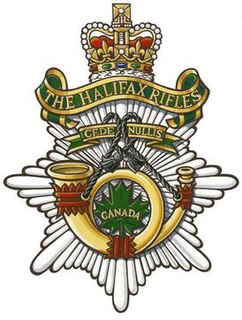 W
WThe Halifax Rifles (RCAC) is a Canadian Army regiment that served between the years of 1860 and 1965 before being reduced to nil strength and placed on the Supplementary Order of Battle. The regiment was reactivated on May 10, 2009, as a reserve force unit performing the role of armoured reconnaissance. It is the first and only regiment since the 1960s to be reactivated from the Supplementary Order of Battle.
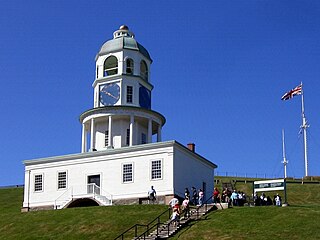 W
WThe Halifax Volunteer Battalion (1860–1868) included six companies that were raised in present-day Halifax Regional Municipality. The six companies included the Scottish Rifles, Chebucto Grays, Mayflower Rifles, Halifax Rifles, Irish Volunteers and Dartmouth Rifles which were all raised in the fall of 1859. The upper ranks of the battalion was made up of distinguished people from the community filling the ranks of officers. The battalion served ceremonial functions, raised money for charities as well as defended the city against possible military threat during the Fenian Raids. The present-day The Halifax Rifles (RCAC) descended from the 63rd regiment of the Battalion.
 W
WThe Hastings and Prince Edward Regiment is a Primary Reserve infantry regiment of the Canadian Army. The regiment is part of 33 Canadian Brigade Group, one of four brigade groups of 4th Canadian Division. The regimental headquarters and one company are located at 187 Pinnacle Street in Belleville, with additional companies in Peterborough and Cobourg. The Peterborough Armoury houses what was traditionally "B Company" or "Moro Company", and "C Company" or "Cassino Company" is housed in an industrial mall unit on Willmott Street in Cobourg. Normally, the regiment deploys as a composite, Ortona Company, while the HQ/Admin forms Somme Company.
 W
WThe Ingobamakhosi Carbineers is an infantry unit of the South African Army.
 W
WThe Iraq Levies was the first Iraqi military force established by the British in British controlled Iraq. The Iraq Levies originated in a local Arab armed scout force raised during the First World War. After Iraq became a British Mandate, the force became composed mostly of Assyrians, Kurds and Iraqi Turkmen who lived in the north of the country, while the nascent Iraqi Army was recruited first from the Arabs who had joined the Iraqi Levies and later from the general Arab population (Beth-Kamala). Eventually the Levies enlisted mainly Assyrian soldiers with British officers. The unit initially defended the northern frontiers of the Province of Mosul when Turkey claimed the province and massed its army across the frontiers. After 1928 the prime role of the Levies was to guard the Royal Air Force bases located in Iraq.
 W
WThe King's African Rifles (KAR) was a multi-battalion British colonial regiment raised from Britain's various possessions in East Africa from 1902 until independence in the 1960s. It performed both military and internal security functions within the colonial territories, and served outside these territories during the World Wars. The rank and file (askaris) were drawn from native inhabitants, while most of the officers were seconded from the British Army. When the KAR was first raised there were some Sudanese officers in the battalions raised in Uganda, and native officers were commissioned towards the end of British colonial rule.
 W
WThe King's Own Malta Regiment was a territorial infantry regiment on the British Army colonial list prior to Malta's independence. It was formed in 1801 as the "Regiment of Maltese Militia", existing only until the following year. It was reformed as the "Maltese Militia" by Sir Adrian Dingli in 1852 before disbanding again in 1857. It was raised again, this time as the "Royal Malta Regiment of Militia" in 1889; this regiment was considered to be the successor to the "Maltese Chasseurs" of the early 19th century. The regiment was renamed the "King's Own Royal Malta Regiment of Militia" in 1903, and was disbanded in 1921. The regiment was raised for a fourth time in 1931 as the "King's Own Malta Regiment". Initially on the British Establishment, in 1951 it was transferred to the Malta Territorial Force before becoming part of the Malta Land Force on Malta's independence in 1964. The regiment was disbanded in 1972.
 W
WLake Force was a unit of the British Army stationed in the Uganda Protectorate on the west coast of Lake Victoria under the command of Brigadier-General Sir Charles Crewe in 1916, during the East African campaign of the First World War (1914–18). It consisted of 2,800 soldiers and 10,000 porters. In May 1916, Lake Force sent 5,000 porters and 100 oxwagons to serve with their allies, the Force publique of the Belgian Congo under Charles Tombeur. The Uganda Native Medical Corps (UNMC) served with both units.
 W
WLes Voltigeurs de Québec is a Primary Reserve infantry regiment of the Canadian Forces. It is located at the Quebec City Armoury in Quebec City, Quebec, Canada. The name of the regiment commemorates another older French-speaking Canadian militia light infantry unit, the Canadian Voltigeurs. The founder of the Canadian Voltigeurs, lieutenant-colonel Charles-Michel d'Irumberry de Salaberry, was the father of the two men who raised Les Voltigeurs de Québec. The regiment was formed in March 1862, with its headquarters in Quebec City, by the amalgamation into a regiment of eight independent Volunteer Militia Rifle companies. The first of these companies was originally raised in December 1861. Between 1862 and 1867 these companies were frequently disbanded, reformed and renumbered. In 1942 it provided an armoured regiment.
 W
WThe Malta Fortress Squadron was a locally recruited Royal Engineers unit based on Malta and on the British Army colonial list prior to Malta's independence. Its history is intimately tied to the succession of engineer and sapper units that were formed and reformed to support the extensive fortifications on the island of Malta. However a distinct Maltese Sapper force is raised in 1892 and remains until 1970.
 W
WThe Natal Border Guard was an auxiliary force levied for the defence of the Colony of Natal during the Anglo-Zulu War of 1879. British military commander Lord Chelmsford had intended to raise a large auxiliary force to support his invasion of the Zulu Kingdom but was opposed by the civilian government of the Colony of Natal, led by its governor Henry Ernest Gascoyne Bulwer, who would have to finance the unit. Bulwer eventually allowed a smaller force to be raised with the stipulation that it not be deployed outside of Natal. This unit was to serve only on a part-time basis, receive no training and fight with the traditional weapons of spear and shield.
 W
WThe Natal Native Contingent was a large force of auxiliary soldiers in British South Africa, forming a substantial portion of the defence forces of the British colony of Natal. The Contingent saw action during the 1879 Anglo-Zulu War. The Natal Mounted Police was created in 1873 to bolster the defenses of Natal. It enlisted European officers, NCOs and natives. The infantry was created in 1878. Most enlisted troops were drawn from the Basuto and Mponso tribes, which had had long experience fighting the Zulus.
 W
WThe Natal Native Pioneer Corps, commonly referred to as the Natal Pioneers, was a British unit of the Zulu War. Raised in November/December 1878 the unit served throughout the war of 1879 to provide engineering support to the British invasion of Zululand. Three companies were formed each comprising around 100 men and clad in old British Army uniforms. The units served at the battles of Isandlwana, Eshowe and Ulundi.
 W
WThe New South Wales Marine Corps (1786–1792) was an ad hoc volunteer unit that the British Royal Navy created to guard the convicts aboard the First Fleet to Australia, and to preserve "subordination and regularity" in the penal colony in New South Wales.
 W
WThe Nigeria Regiment, Royal West African Frontier Force, was formed by the amalgamation of the Northern Nigeria Regiment and the Southern Nigeria Regiment on 1 January 1914. At that time, the regiment consisted of five battalions:1st Battalion - ex 1st Bn, Northern Nigeria Regiment 2nd Battalion - ex 2nd Bn, Northern Nigeria Regiment 3rd Battalion - ex 3rd Bn, Northern Nigeria Regiment 4th (Lagos) Battalion - ex 2nd Bn, Southern Nigeria Regiment 5th Battalion - ex 1st Bn, Southern Nigeria Regiment
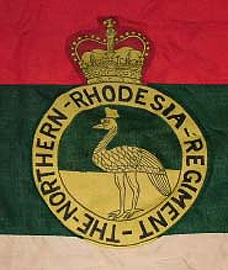 W
WThe Northern Rhodesia Regiment (NRR) was a multi-battalion British colonial regiment raised from the protectorate of Northern Rhodesia. It was formed in 1933 from elements of the Northern Rhodesia Police, which had been formed during Company rule in 1912. Made up of black other ranks and white officers, its motto was "Different in Race, Equal in Fidelity". This motto may have been adopted following native African porters during the First World War being recognised and compensated as couriers by the British.
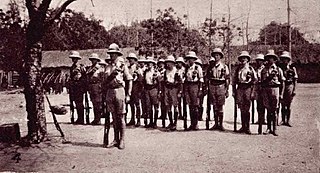 W
WThe Nyasaland Volunteer Reserve (NVR) was a reserve infantry unit in the British protectorate of Nyasaland. The British Central Africa Volunteer Reserve was formally established by the colonial government in 1901 and was renamed when the protectorate became Nyasaland in 1907. In the initial years the unit was little more than a rifle shooting club with no uniform and no military training. The NVR was placed on a more formal standing in 1908 under the Volunteer Ordinance. This implemented residency and racial requirements for membership and made provision for the unit to be mobilised by the governor. The unit was initially formed of four sections but grew to seven sections by 1914 and by 1930 the unit had ten.
 W
WThe Ontario Regiment (RCAC) is a Primary Reserve armoured reconnaissance regiment of the Canadian Army. The unit is based in downtown Oshawa, Ontario. Formed in 1866, and more commonly known as the 'Ontarios', 'black cats' or 'ONT R', the regiment ranks among the oldest continuously serving Reserve (Militia) regiments in Canada and is one of the senior armoured regiments in the Royal Canadian Armoured Corps.
 W
WThe Penang and Province Wellesley Volunteer Corps, also known as Penang Volunteer Corps and Penang Volunteer Rifle was a militia unit in Malaya. It was established on 1 March 1861 and together with Singapore Volunteer Corps and Malacca Volunteer Corps, they were a part of the Crown Colony of the Straits Settlements Volunteer Force (SSVF). The Penang Volunteer Rifle was the 3rd Battalion SSVF while Singapore is 1st and 2nd Battalion SSVF and Malacca was the 4th Battalion SSVF. After the expulsion of Singapore from Malaysia in 1965, the Penang Volunteer Rifle became the oldest military unit established in Malaysia.
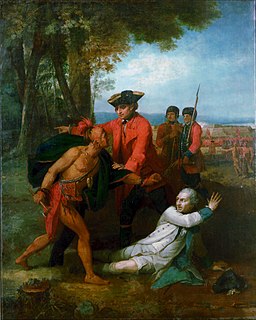 W
WProvincial troops were raised by the colonial governors and legislatures for extended operations during the French and Indian Wars. The provincial troops differed from the militia, in that they were a full-time military organization conducting extended operations. They differed from the regular British Army in that they were recruited only for one campaign season at the time. These forces were often recruited through a quota system applied to the militia. Officers were appointed by the provincial governments. During the eighteenth century militia service was increasingly seen as a prerogative of the social and economic well-established, while provincial troops came to be recruited from different and less deep-rooted members of the community.
 W
WThe Queen's Own Rifles of Canada is a Primary Reserve regiment of the Canadian Armed Forces, based in Toronto. The regiment is part of 4th Canadian Division's 32 Canadian Brigade Group. It is the only reserve regiment in Canada to currently have a parachute role. The regiment consists of the reserve battalion, the Regimental Association, and the Regimental Band and Bugles. The official abbreviation is The QOR of C, but the name is often abbreviated to QOR.
 W
WThe Queen's York Rangers R.C.A.C. is a Canadian Army Primary Reserve Royal Canadian Armoured Corps regiment based in Toronto and Aurora. The regiment is part of 4th Canadian Division's 32 Canadian Brigade Group. The regiment consists of one reconnaissance squadron, and a Headquarters and Training Squadron. The regimental family also includes The Queen's York Rangers Band (volunteer) along with two Royal Canadian Army Cadets corps and a Royal Canadian Air Force Cadet squadron. The unit motto is Pristinae Virtutis Memor – "Remembering their glories in former days". Among its own members and those of other regiments, the unit is referred to as the Rangers. The name is abbreviated as QY Rang, and sometimes pronounced "K'why Rang".
 W
WThe Royal Ranger Regiment is an infantry regiment of the Malaysian Army. Although it is second in seniority to the Royal Malay Regiment, the RRD can trace its origins back to the mid 19th century and the establishment of The Sarawak Rangers, the peacekeeping force in the Sarawak region. This force was absorbed by the Sarawak Constabulary in 1932, but the name was revived in 1941 as a British Colonial unit; this unit commanded by British Lieutenant Colonel C.M. Lane was captured by the Japanese in 1942.
 W
WThe Rhodesia Regiment (RR) was one of the oldest and largest regiments in the Rhodesian Army. It served on the side of the United Kingdom in the Second Boer War and the First and Second World Wars and served the Republic of Rhodesia in the Rhodesian Bush War.
 W
WThe Royal Bermuda Regiment (RBR), formerly the Bermuda Regiment, is the home defence unit of the British Overseas Territory of Bermuda. It is a single territorial infantry battalion that was formed by the amalgamation in 1965 of two originally voluntary units, the mostly black Bermuda Militia Artillery (BMA) and the almost entirely white Bermuda Volunteer Rifle Corps (BVRC).
 W
WThe Royal Gibraltar Regiment is the home defence unit, part of British Forces Gibraltar for the British overseas territory of Gibraltar. It was formed in 1958 from the Gibraltar Defence Force as an infantry unit, with an integrated artillery troop. The Regiment is included in the British Army as a defence engagement force. In 1999, the regiment was granted the Royal title. The Regiment recruits from Gibraltar, the United Kingdom, Republic of Ireland and the Commonwealth.
 W
WThe Royal Malay Regiment is the premier unit of the Malaysian Army's two infantry regiments. At its largest, the Malay Regiment comprised 27 battalions. At present, three battalions are parachute trained and form part of the Malaysian Army Rapid Deployment Force. Another battalion has been converted into a mechanised infantry battalion while the remaining battalions are standard light infantry. The 1st Battalion Royal Malay Regiment acts as the ceremonial foot guards battalion for the Yang di-Pertuan Agong, and is usually accompanied by the Central Band of the Royal Malay Regiment. As its name suggests, the regiment only recruits ethnic Malays.
 W
WThe Royal Malta Artillery (RMA) was a regular artillery unit of the British Army prior to Malta's independence. It was formed in 1889, having been called the Royal Malta Fencible Artillery from 1861 until 1889.
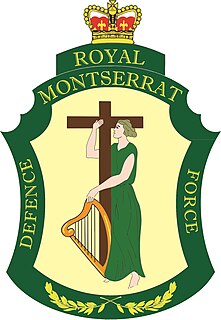 W
WThe Royal Montserrat Defence Force is the home defence unit of the British Overseas Territory of Montserrat. Raised in 1899, the unit is today a reduced force of about forty volunteer soldiers, primarily concerned with civil Defence and ceremonial duties. The unit has a historical association with the Irish Guards. The current Commanding Officer is Major Alvin Ryan, who took over from the late Captain Horatio Tuitt. As a British Overseas Territory (BOT), defence of Montserrat remains the responsibility of the United Kingdom.
 W
WThe Royal Newfoundland Regiment is a Primary Reserve infantry regiment of the Canadian Army. It is part of the 5th Canadian Division's 37 Canadian Brigade Group.
 W
WThe Singapore Volunteer Corps was a militia unit established in 1854 as the Singapore Volunteer Rifle Corps. The Corps underwent several reorganisations and was known by various names through its history. In 1965, it was renamed the People's Defence Force, the predecessor of the Singapore Armed Forces.
 W
WThe Somaliland Camel Corps (SCC) also referred to as the Somali Camel Corps, was a Rayid unit of the British Army based in British Somaliland. It lasted from the early 20th century until 1944.
 W
WThe Somaliland Scouts was a Rayid military unit, a regiment, of the British Army. It was established after the liberation of British Somaliland from Italy in December 1941 and the dissolution of the Somaliland Camel Corps in 1942, which was formerly tasked with the defense of the protectorate.
 W
WThe Southern Nigeria Regiment was a British colonial regiment which operated in Nigeria in the early part of the 20th century.
 W
WThe Sudan Defence Force (SDF) was a locally recruited British-led force formed in 1925 to assist the police in the event of civil unrest, and to maintain the borders of British administered Sudan. During the Second World War, it also served beyond the Sudan in the East African Campaign and in the Western Desert Campaign.
 W
WThe Governor General's Body Guard was a Canadian Army, militia, Household Cavalry regiment.
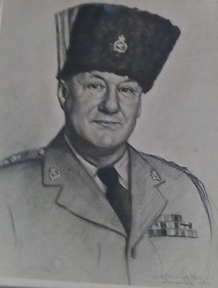 W
WThe Trans-Jordan Frontier Force was formed on 1 April 1926, to replace the disbanded British Gendarmerie. It was a creation of the British High Commissioner for Palestine whose intention was that the Force should defend Trans-Jordan's northern and southern borders. The TJFF was also an Imperial Service regiment whose Imperial Service soldiers agreed to serve wherever required and not just within the borders of their own colony, protectorate or, in the case of the Transjordan, mandate. This was in contrast to the Arab Legion, which was seen more as an internal security militia, deriving from the troops of the Arab Revolt and closely associated with the Hashemite cause. The Amir Abdullah was an Honorary Colonel of the Trans-Jordan Frontier Force from its inception. However, the local commanders thought it unnecessary to form an additional force, illustrated that the expansion of The Arab Legion would be a better action.
 W
WThe Victoria Rifles was a military unit of black soldiers in Halifax, Nova Scotia that was established in 1860 in the wake of the Crimean War and on the eve of the American Civil War. It was one of the oldest black regiments established in Canada. On January 30, 1860, at a meeting of the Victoria Rifles, George Anderson was elected Captain and John H. Symonds elected 1st. Lieut.
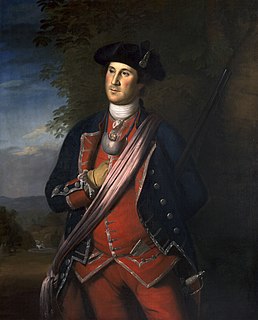 W
WThe Virginia Regiment was formed in 1754 by Virginia's Royal Governor Robert Dinwiddie, as a provincial corps. The regiment served in the French and Indian War, with members participating in actions at Jumonville Glen and Fort Necessity in 1754, the Braddock expedition in 1755, and the Forbes expedition in 1758. Small detachments of the regiment were involved in numerous minor actions along Virginia's extensive wilderness frontier.
 W
WThe West India Regiments (WIR) were infantry units of the British Army recruited from and normally stationed in the British colonies of the Caribbean between 1795 and 1927. In 1888 the two West India Regiments then in existence were reduced to a single unit of two battalions. This regiment differed from similar forces raised in other parts of the British Empire in that it formed an integral part of the regular British Army. In 1958 a new regiment was created following the creation of the Federation of the West Indies with the establishment of three battalions, however, the regiment's existence was short-lived and it was disbanded in 1962 when its personnel were used to establish other units in Jamaica and Trinidad and Tobago. Throughout their history, the regiments were involved in a number of campaigns in the West Indies and Africa, and also took part in the First World War, where they served in the Middle East and East Africa.
 W
WThe Zanzibar Volunteer Defence Force was a military unit raised in the British protectorate of Zanzibar during the First World War. It was formed to supplement the Zanzibar garrison after defeat in the 4 November 1914 Battle of Tanga left British forces in the region on the defensive. Though enlistment was voluntary almost the entire able-bodied military-age European population of the protectorate joined the unit. After the British garrison was withdrawn in October 1915 the Zanzibar Volunteer Defence Force and other indigenous units were responsible for the defence of the protectorate.